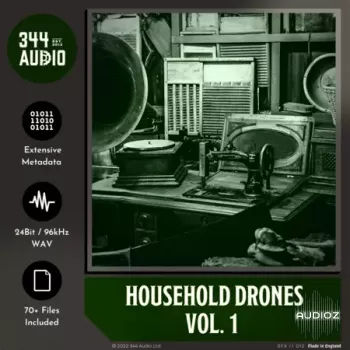
P2P | 2022年10月29日| 6.09 GB
该乐器位于东德德累斯顿附近的一个历史村庄教堂,以13世纪的教堂为基础,在随后的几个世纪里进行了重建和扩建,最后一次是在1742年。由于大量的木质装置,教堂的音响效果干燥而清晰。
风琴是由德国弗劳恩斯坦/萨克森的戈特弗里德·西尔伯曼于1729- 1731年建造的。Gottfried Silbermann的风琴类型可以分为不同的建筑类。这种乐器代表了典型的西尔伯曼中型教堂风琴,是赫尔穆特·沃尔查和赫伯特·科勒姆/德累斯顿的克罗伊兹基什最喜欢的乐器之一。
典型的Gottfried Silbermann管风琴特征是强烈而尖锐的外位音停,如1 1/2’,2’和3’,丰富而温暖的8’主音停和明亮的超八度音停,如4’,2’和1’。有非常有特色的基本站,如Rohrflöte 8’和Quintadena 8’。产生的声音明亮、清晰、洪亮。管风琴手不需要很多停音就能达到丰富的静压定音。风琴被调谐到所谓的历史“Chorton”(a1=465赫兹)。
几乎所有的管子都是原始的,尤其是前管(Principal 8’),而大多数历史风琴在第一次世界大战期间失去了它们,因为对武器金属的需求日益增加。尽管如此,该乐器不得不在1852年进行了几次修改(平等调谐(因此缩短了管道!),由于改变声音偏好而进行的声音修改,安装了一个踏板耦合器),并在1909年浪漫主义晚期,扩展了一个带有气动跟踪的Salicional 8′ (!)1953年,风压从94毫米大幅降低到70毫米,声音发生了严重的变化,导致风非常不稳定,完全改变了微弱的声音特征,有明显的风凹陷(听赫伯特·科卢姆斯1965年的录音中的一个小声音例子)。1997年,德累斯顿管风琴车间Kristian Wegscheider被委托对原有的风系统和管声进行历史性的重建和改造。风压再次设置为94毫米。由于失去了原有的调音,它被改成了具有历史意义的西尔伯曼式调音系统,特别能配合巴洛克室内乐,基本键非常清晰。
该仪器有两个手册和一个缺失c#的踏板,机械跟踪动作,手动换向耦合器,一个踏板耦合器自1852年(固定耦合器到Hauptwerk之前),是完全可玩的,在极好的形状。
教堂房间有一个中等干燥的音响效果,大约有2秒的回响。
查看谷歌地图中的位置
录音技术
该管风琴首次录制于2003年5月,最初为Hauptwerk V1。
2010年5月,使用OrganArt引入的多发布技术,采用48 kHz, 24位,多通道环绕/Vario音频透视(VAP)进行了一次全新的录音。停止记录了多个释放水平为短,中,长键攻击的最佳声学映射。所有等级的人都用原始的颤音记录下来。
谢谢
我要非常感谢Reinhardtsgrimma教区和Keller牧师对这个项目的支持。特别感谢Kristian Wegscheider提供的大量有用信息。
最后但并非最不重要的是特别感谢我的妻子,她协助所有的项目,并负责照片文档。
P2P | 29 October 2022 | 6.09 GB
The instrument is located in a historical village church in East Germany near Dresden, based on a church of the 13th century, which was reconstructed and extended during the following centuries, last in 1742. The church acoustics is dry and clear because of the large amount of wooden installations.
The organ was built in 1729-31 by Gottfried Silbermann of Frauenstein/Sachsen, Germany. Gottfried Silbermann organ types can be divided into different architecture classes. This instrument represents a typical Silbermann middle-sized church organ and was one of the favourite instruments of Helmut Walcha and Herbert Collum/Kreuzkirche of Dresden.
Typical Gottfried Silbermann organ features are strong and sharp aliquote stops, such as the 1 1/2′, 2′ and 3′, rich and warm 8′ Principal stops and bright superoctave stops, such as the 4′, 2′ and 1′. There are very characteristic basic stops such as the Rohrflöte 8′ and Quintadena 8′. The resulting sound is bright, clear and sonorous. The organist doesn’t need many stops to achieve a rich plenum registration. The organ is tuned to the so-called historical “Chorton” (a1=465 Hz).
Nearly all pipes are original, especially the frontpipes (Principal 8′) , whereas most historical organs lost them during world war I, because of increasing needs for weapon metals. Nevertheless, the instrument had to bear several modifications in 1852 (equal tuning (thereby shortening the pipes!), voicing modifications due to changing sound preferences, installation of a pedal coupler) and in late romantic period 1909, extension by a Salicional 8′ with pneumatic tracking (!). In 1953, the wind pressure was strongly reduced from 94 mm to 70 mm and severe voicing changes were made, resulting in an extremely instable wind and totally altered weak sound characteristic with noticeable wind sag (listen to a small sound example of a Herbert Collums recording from 1965). In 1997, Kristian Wegscheider, organ workshop of Dresden, was entrusted with the historical reconstruction and renovation of the original wind system and pipe voicing. The wind pressure was again set to 94 mm. Because of the loss of original tuning, it was changed to a historical Silbermann like tuning system, which specially enables the accompanying of baroque chamber music, resulting in very clear basic keys.
The instrument has two manuals and a pedal with missing C#, mechanical tracker action, a manual shift coupler, a pedal coupler since 1852 (fixed coupling to the Hauptwerk before) and is fully playable and in excellent shape.
The church room has a medium-dry acoustics with about 2 seconds of reverberation.
See Location in Googlemaps
Recording technique
The organ was first recorded in May 2003 originally for Hauptwerk V1 .
A completely new recording took place in May 2010 with 48 kHz, 24 bit, multi-channel for Surround/Vario Audio Perspective (VAP), using the multi-release technique introduced by OrganArt. The stops were recorded with multiple release levels for short, medium and long key attacks for optimal acoustical mapping. All ranks were additionally recorded with the original tremulant sound.
Thanks
I would like to thank very much the parish of Reinhardtsgrimma and Pastor Keller for supporting this project. Special thanks to Kristian Wegscheider for a lot of helpful information.
Last but not least special thanks to my wife, who assists all projects and is responsible for the photo documentation.




